AEA

- American Electronic Assembly.
- Main office location: Tencarola (Padova).
- Founded by Tiziano Tredese, Lanfrnaco Chinea (formerly manager
of Model Racing) and Dalla Pria Group; directed by Tredese, this
company disappeared in the middle of the eighties.
- AEA builded machines with original boards (mainly from Sega/Gremlin), with slightly hardware changes, and finally three original games.
- Except for Asteroid, All AEA productions were
manifactured under regular license.
| Name | Orig. | Year | Emul. | Info |
|---|---|---|---|---|
| Head-on |
 |
1979 | Clone of Sega original |
|
| Super Head-on |
 |
1979 |
Clone of Head-on 2 (Sega), to be confirmed |
|
| Silver Dollar |
 |
1979 |
Clone of Deadeye (Meadows) |
|
| Aliens Multispeed |  |
1980 | Under Sega/Gremlin license | |
| Asteroid |
 |
1980 | Clone of Asteroids (Atari) |
|
| Mini Monaco G.P. |
 |
1980 |
Clone of Sega original | |
| Carnival |
 |
1980 |
Clone of Sega original | |
| Borderline |
 |
1981 |
Clone of Sega original | |
| Arcade Super-Reflex |
 |
1982 |
||
| Rolling Ball |
 |
1983 |
||
| Kubiks |
 |
1984 |
Super Head-on
Probably it's the colorized version of Head-on, equipped with an
Hantarex HTC90 monitor.Aliens Multispeed
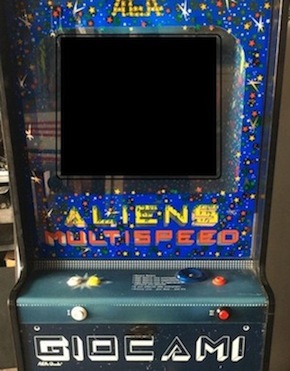 |
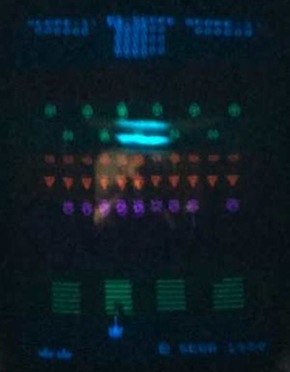 |
It's identical to Space Invaders as gameplay; but the hardware is totally different. On the cabinet is wrtten"AEA by Gremlin", but the screen shows the name of Sega, which controlled the Gremlin. From a preliminary scan, it seems the board is similar to the one of Space Trek, but the monitor is monochrome (perhaps a Hantarex SV-1) covered with colored strips.
Two unit are still existing; the pictures cone from PaYrYcK.
Asteroid
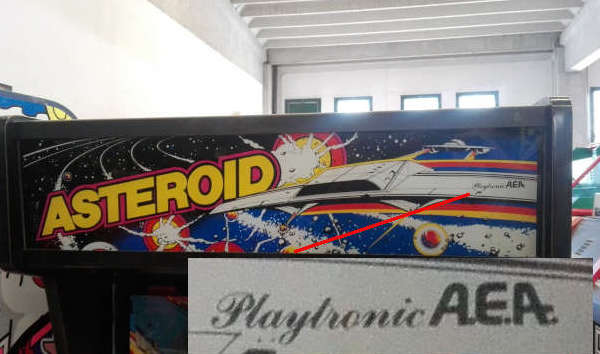
On the marquee are the logos of AEA and Playtronic: the Dalla Pria Group owned the brand Playtronic and has a share of AEA company. This game does not appear to be an authorized copy.
Mini Monaco G.P.
The board was an original Sega with no CPU; the cabinet was very
tight.Borderline
The Romset used by MAME comes from an AEA machine. The PCB inside is
identical to the original one made by Sega.Arcade
Super-Reflex
 |
 |
Only one example of this game has been found, and it is not
working. The owner decided to change it to a multigame machine, so
the original board and controls were removed.
On some sites it is listed as a prize game. It has no mechanism such
as coupon dispensers or tokens, but it does have a counter inside.
which advances each time the player reaches a certain score. The
brochure says that a "biri-biri," a victory sound, is made when a
certain score is reached, so it is probably the arcade operator who
decides whether and how to reward those who succeed. Only two people
reported playing a game of Arcade Super-Reflex, and none physically
received a prize.
The cabinet is rather odd: it is very tall, contains a small monitor
mounted at the bottom, and a series of mirrors that reflect the
image - this perhaps explains the name - into a back-mointed screen,
surrounded by side plates to give an illusion of depth.
The controls are also puzzling: there is a joystick with button at
the top, but it appears that only the button is connected to the
board, while the lever is only "partially set up."
The flyer, in Italian and English, is not very helpful: bonuses,
malus, time, three-of-a-kind, poker, black holes...from the pictures
it looks like some kind of slot machine and that the only skill
required of the player is to press the button at the right time and
choose the right symbol to make a combination.
According to some sites, Taito marketed a version of this game in
Japan.
On the left is the cabinet, but with the original controls already
replaced; on the right are some screenshots from the flyer. All
taken from the Tilt website.
Rolling Ball
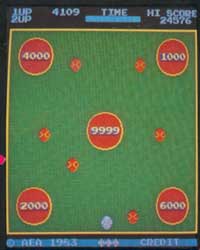 |
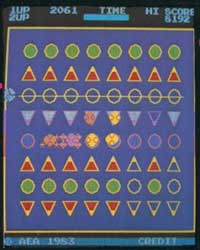 |
 |
Images from the flyer, thanks to Federico Croci.
Roll over the targets with a white marble.
Avoid other balls; stupid (yellow), smart (orange), very smart
(purple) and sticky (red).
Also bonus stars, fuel recharge, vitamins and so on.


